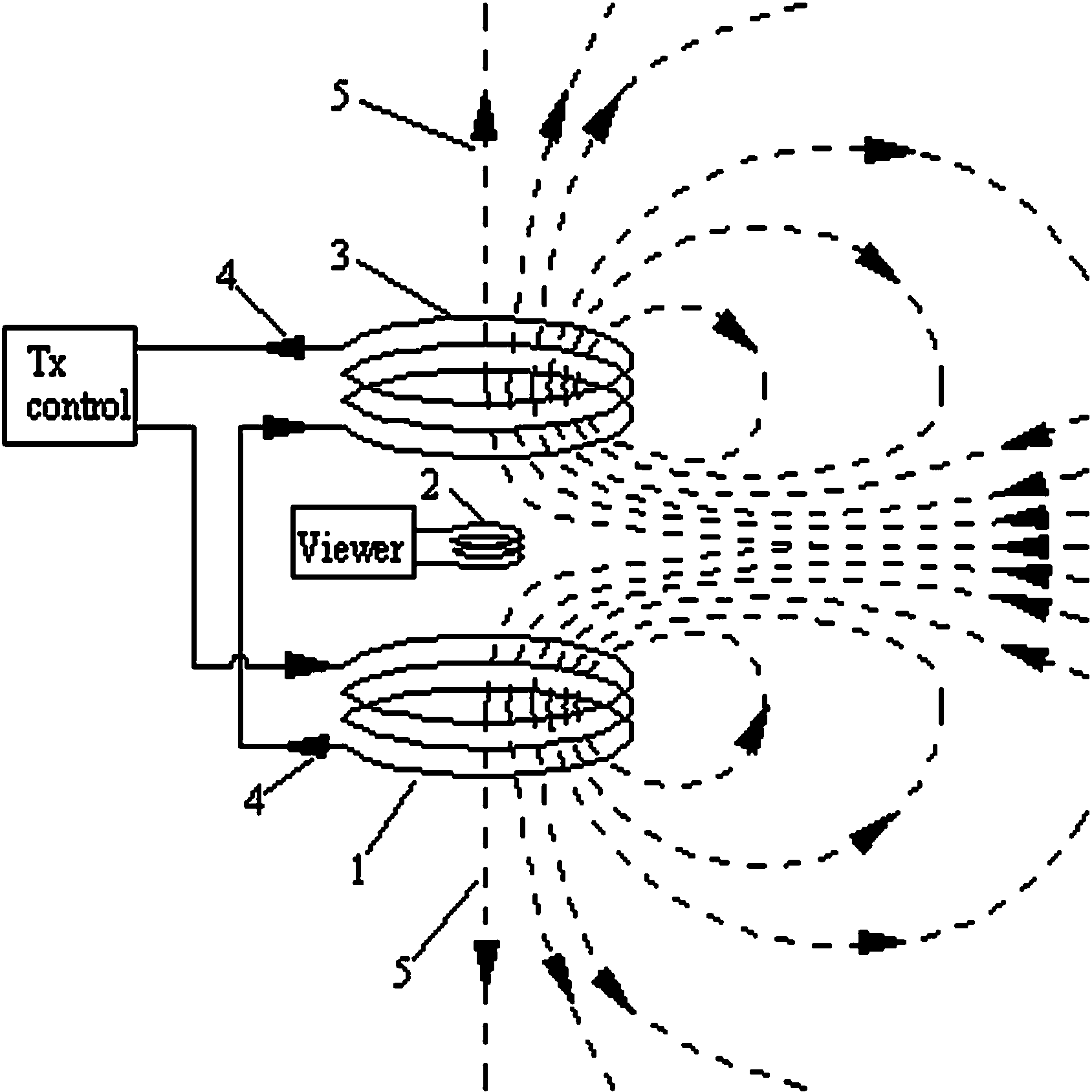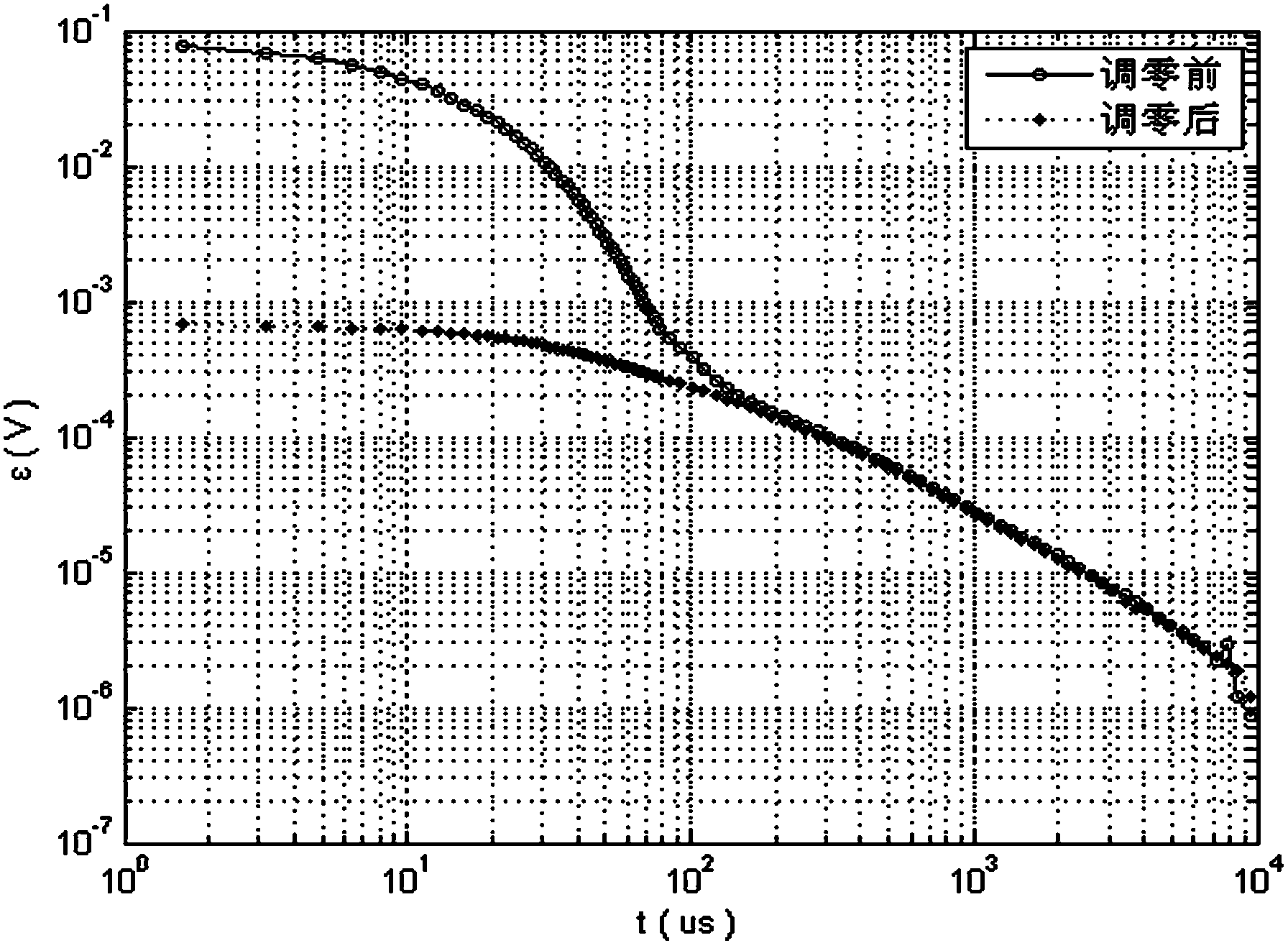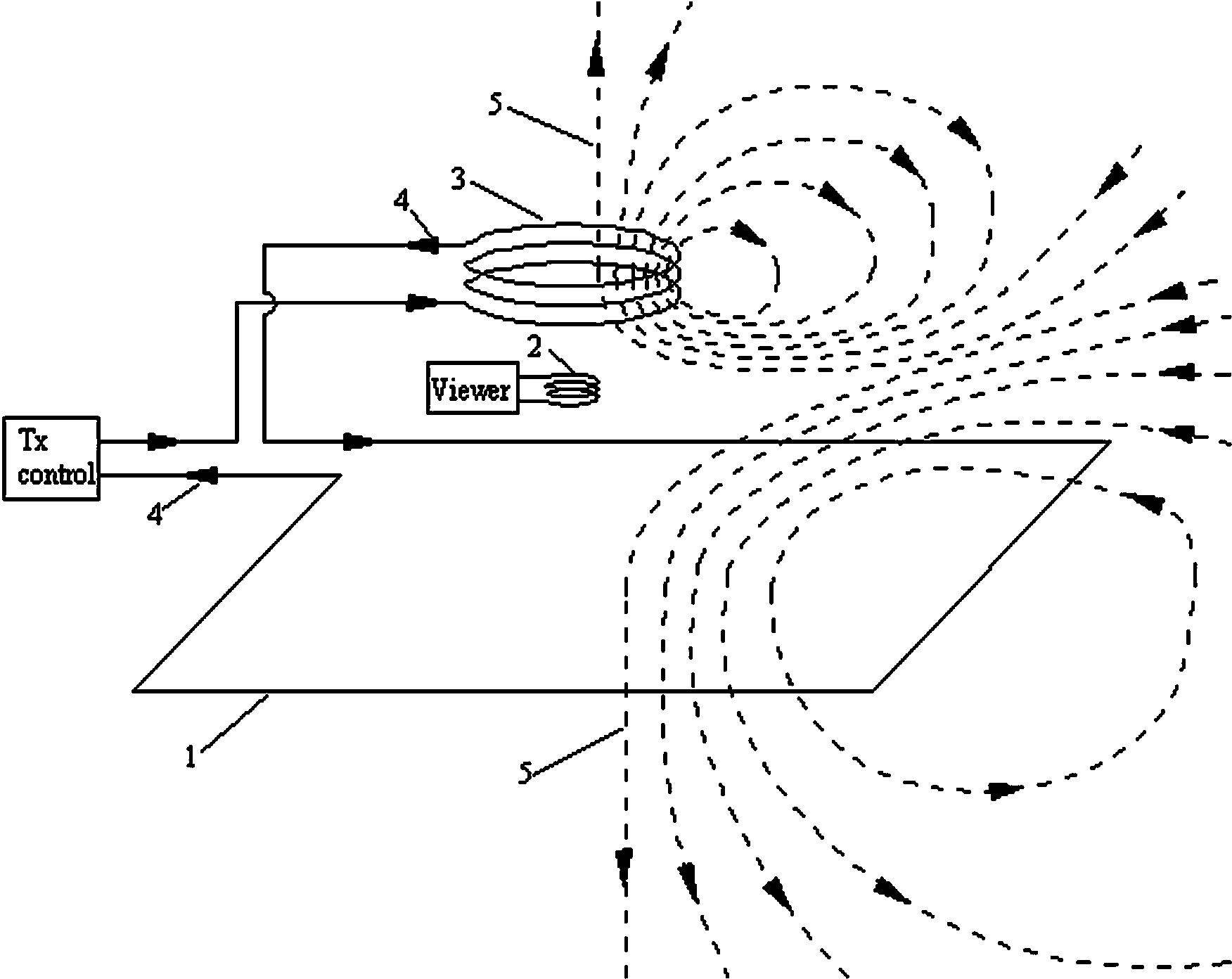Transient electromagnetic measurement device and method
A measurement device and transient electromagnetic technology, applied in the field of geophysical exploration, can solve problems such as difficult operation and complicated processing process, and achieve the goal of weakening the influence, improving the signal-to-noise ratio of the secondary field signal, and high-precision transient electromagnetic sounding Effect
- Summary
- Abstract
- Description
- Claims
- Application Information
AI Technical Summary
Problems solved by technology
Method used
Image
Examples
Embodiment 1
[0025] Embodiment 1: as figure 1 As shown, it is a schematic diagram of a small-frame transmitting device, including a transmitting antenna coil 1, a receiving antenna coil 2, and a zeroing antenna coil 3. The planes of the three are parallel to each other, and the centers of the three are located on the same central axis perpendicular to the plane. . Vertically, the transmitting antenna 1 is closest to the detection area, and the zeroing antenna 3 is above the transmitting antenna 1. The vertical distance of the three antennas is adjustable, but the receiving antenna 2 is guaranteed to be located in the middle of the transmitting antenna 1 and the zeroing antenna 3. The transmitting antenna 1 and the zeroing antenna 3 have the same size, wire type, winding method, and number of turns, and are connected in series in the transmitting loop so that the currents flowing through the two coils are opposite to each other.
[0026] When the transmitter connects current to the transm...
Embodiment 2
[0027] Embodiment 2: as image 3 As shown, it is a schematic diagram of a large-frame transmitting device, including a large-frame transmitting antenna coil 1, a receiving antenna coil 2, and a zero-adjusting antenna coil 3. The receiving antenna 2 is smaller than the zero-adjusting antenna 3, and the zero-adjusting antenna 3 is smaller than the transmitting antenna 1. The planes where the two are located are parallel to each other, and the relative positions in the parallel direction can be adjusted. Vertically, the vertical distance of the three antennas is adjustable (can be on the same plane). The transmitting antenna 1 and the zeroing antenna 3 are connected in series in the transmitting loop, so that the currents flowing through the two coils are opposite to each other. The effective number of turns of the zeroing antenna 3 is adjustable.
[0028] When the transmitter feeds current into the transmitting loop, both the zeroing antenna 3 and the large-frame transmitting ...
Embodiment 3
[0029] Embodiment 3: as Figure 4 As shown, it is a schematic diagram of a dipole device, including a transmitting antenna coil 1, a receiving antenna coil 2, and a zeroing antenna coil 3. The size of the receiving antenna 2 is smaller than that of the zeroing antenna 3 and the transmitting antenna 1. The planes of the three are parallel to each other, and in the parallel direction The relative position on it is adjustable. Vertically, the transmitting antenna 1 is closest to the detection area, the receiving antenna 2 is above the transmitting antenna 1, and the zeroing antenna 3 is above the receiving antenna 2. The horizontal and vertical distances of the three antennas can be adjusted. The zeroing antenna 3 and the transmitting antenna 1 are connected in series in the transmitting loop, so that the current flowing through the two coils flows in the same direction 4 . The effective number of turns of the zeroing antenna 3 is adjustable.
[0030] When the transmitter feeds...
PUM
 Login to View More
Login to View More Abstract
Description
Claims
Application Information
 Login to View More
Login to View More - R&D
- Intellectual Property
- Life Sciences
- Materials
- Tech Scout
- Unparalleled Data Quality
- Higher Quality Content
- 60% Fewer Hallucinations
Browse by: Latest US Patents, China's latest patents, Technical Efficacy Thesaurus, Application Domain, Technology Topic, Popular Technical Reports.
© 2025 PatSnap. All rights reserved.Legal|Privacy policy|Modern Slavery Act Transparency Statement|Sitemap|About US| Contact US: help@patsnap.com



